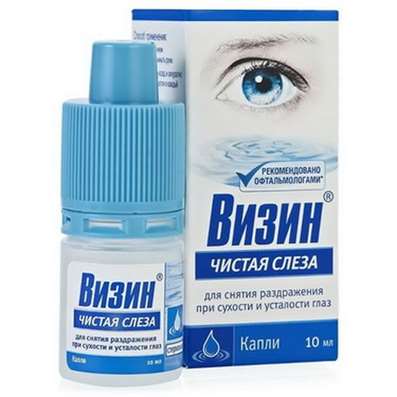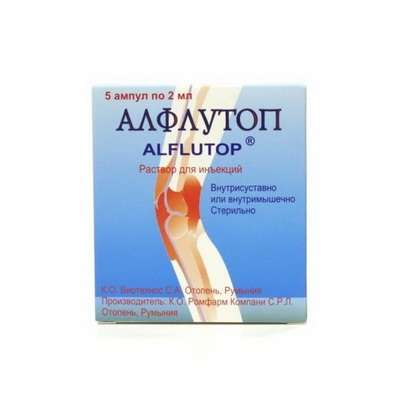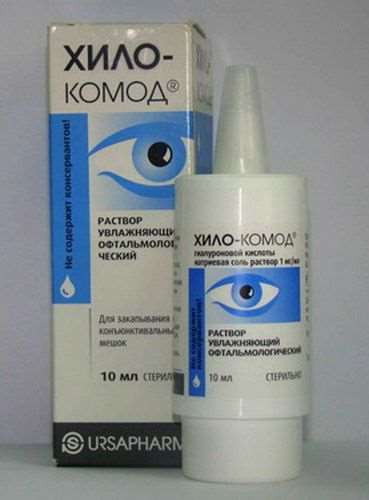Instruction for use: Aromasin
I want this, give me price
Active substance Exemestane
ATX code L02BG Aromatase inhibitorsPharmacological groups
Estrogens, gestagens; Their homologues and antagonists
Antineoplastic hormonal agents and hormone antagonists
Nosological classification (ICD-10)
C50 Malignant neoplasm of breast
Cancer of the nipple and areola of the breast, Breast carcinoma, The hormone-dependent form of recurrent breast cancer in women in menopause, Hormone-dependent breast cancer, Disseminated breast carcinoma, Disseminated Breast Cancer, Malignant breast cancer, Malignant neoplasm of breast, Contralateral breast cancer, Locally advanced or metastatic breast cancer,Locally-distributed breast cancer, Locally-recurring breast cancer, Metastatic breast carcinoma, Metastasis of breast tumors, Metastatic breast carcinoma, Inoperable breast carcinoma, Incompatible breast cancer, Breast cancer in women with metastases, Breast cancer in men with metastases, Breast Cancer, Breast cancer in men, Mammary cancer, Breast cancer with distant metastases, Breast cancer in postmenopausal women, Breast cancer hormone-dependent, Breast cancer with local metastases, Breast cancer with metastases, Breast cancer with regional metastases,Breast cancer with metastases, Common hormone-dependent forms of breast cancer, Common Breast Cancer, Recurrent Breast Cancer, Recurrence of breast tumors, Breast cancer, Estrogen-dependent breast cancer, Estrogen-Dependent Breast Cancer, Disseminated breast cancer with overexpression of HER2, Tumors of the mammary glands
Composition and form of release
Tablets, covered with sugar shell 1 tab.
Exemestane 25 mg
Auxiliary substances: mannitol; Hypromellose; Polysorbate 80; Crospovidone; Silicon dioxide colloid hydrated; MCC; Sodium carboxymethyl starch; Magnesium stearate
Membrane: hypromellose; Simethicone emulsion; Macrogol 6000; Magnesium carbonate; Titanium dioxide; Methyl parahydroxybenzoate; Polyvinyl alcohol; Sucrose
In a blister for 15 pcs .; In a pack of cardboard 1, 2 or 6 blisters.
Description of dosage form
Round, biconvex tablets white or white with a slightly grayish shade of color, covered with sugar shell, marked "7663", made with black paint, on one side.
pharmachologic effect
Pharmacological action - antitumor, inhibitory synthesis of estrogens.
It blocks aromatase and stops the synthesis of estrogens (without affecting the production of other steroid hormones, such as cortisol and aldosterone).
Pharmacodynamics
Irreversible steroid aromatase inhibitor, similar in structure to the natural substance - androstenedione.
In postmenopausal women, estrogens are produced primarily by converting androgens to estrogens under the action of the aromatase enzyme in peripheral tissues. Blocking the formation of estrogen by inhibiting aromatase is an effective and selective method for treating hormone-dependent breast cancer in postmenopausal women. The mechanism of action of the drug Aromasin® is due to the fact that it binds irreversibly to the active fragment of the enzyme, causing its inactivation. In postmenopausal women, the Aromasin® drug significantly reduces serum estrogen concentration, starting at a dose of 5 mg, with a maximum reduction (> 90%) achieved with doses of 10-25 mg. In postmenopausal patients with breast cancer who received 25 mg of the drug daily, the total level of the aromatase enzyme in the body decreased by 98%.
Exemestane does not possess progestogen and estrogenic activity. Only minor androgenic activity is revealed, mainly when high doses are used.
The drug Aromasin® has no effect on the biosynthesis of cortisol and aldosterone in the adrenal glands, which confirms the selectivity of the drug. In this regard, there is no need for replacement therapy with gluco- and mineralocorticoids.
With the use of the drug even in low doses, a slight increase in serum levels of LH and FSH is observed, which is characteristic of the preparations of this pharmacological group and probably develops on the basis of feedback at the pituitary level: a decrease in the concentration of estrogen stimulates the secretion of gonadotropins in the pituitary gland also Postmenopausal women.
Pharmacokinetics
After oral administration, it is quickly absorbed, mainly from the digestive tract. Absolute bioavailability of the drug is not established. It is assumed that it is limited to the extensive effect of the first passage through the liver. With a single dose of 25 mg Cmax in plasma is 17 ng / ml and is achieved after 2 hours. Simultaneous food intake increases the bioavailability of the drug by 40%.
Pharmacokinetic parameters are linear. The final T1 / 2 is approximately 24 hours. Binding to plasma proteins is about 90%. Exemestane and its metabolites do not bind to erythrocytes. At repeated reception of unpredictable cumulation eksemestana it is not observed. The process of biotransformation of exemestane is carried out by oxidation of the methylene group at the 6 position under the action of the CYP3A4 isoenzyme and / or reduction of the 17-keto group under the action of aldoketoreductase followed by conjugation. The metabolites of exemestane are either inactive or less active with respect to aromatase inhibition than the parent compound.
Approximately equal amounts of exemestane (about 40%) are excreted in urine and feces within a week. From 0.1 to 1% is excreted in the urine unchanged. A marked relationship between the systemic effect of the drug and age is not established.
In patients with severe renal insufficiency (Cl creatinine <30 ml / min) the systemic effect of exemestane is 2 times higher, however, dose adjustment is not required.
In patients with moderate or severe hepatic insufficiency, the systemic effect of exemestan is 2-3 times higher, however, dose adjustment is not required.
Indications
Common breast cancer in women in natural or induced postmenopausal women with progression of the disease against the background of anti-estrogen therapy, as well as with the progression of the disease after repeated use of various types of hormone therapy;
Adjuvant therapy for early breast cancer in postmenopausal women with estrogen-positive receptors or an unknown receptor status after the completion of 2-3 years of initial adjuvant tamoxifen therapy to reduce the risk of relapse (distant or regional) and contralateral breast cancer.
Contraindications
Hypersensitivity to exemestane or any other component of the drug;
Pre-menopausal endocrine status;
Pregnancy and lactation;
childhood.
With caution - impaired liver or kidney function.
Side effects
In general, tolerability of Aromasin® is good; The undesirable effects with the use of the drug at a dose of 25 mg / day are minor or moderately pronounced.
Below are listed the undesirable reactions, distributed according to the body systems and frequency: very often -> 10%; Often -> 1- <10%; Sometimes -> 0,1- <1%; Rarely -> 0,01 - <0,1%.
On the part of the digestive system: very often - nausea; Often - anorexia, abdominal pain, vomiting, constipation, dyspepsia, diarrhea.
From the central and peripheral nervous system: very often - insomnia, headache; Often - depression, dizziness, carpal tunnel syndrome.
From the side of the vascular system: very often - flushes of blood to the face.
From the skin and skin appendages: very often - sweating; Often - a rash, alopecia.
From the musculoskeletal system: very often joint and skeletal muscle pains.
Other: very often - increased fatigue; Often - pain of unspecified localization, peripheral edema or edema of the legs.
Approximately 20% of patients (especially in patients with initial lymphopenia) experienced a periodic decrease in the number of lymphocytes. However, the average number of lymphocytes in these patients did not change significantly with time, and a concomitant increase in the incidence of viral infections was not observed.
Occasionally, an increase in the activity of hepatic enzymes and AF was observed, mainly in patients with liver and bone metastases, as well as in the presence of other liver lesions (it is not established whether these changes are related to taking the drug or not).
Interaction
Preparations containing estrogens completely neutralize the pharmacological action of exemestane.
The drug is metabolized by cytochrome P450 (CYP) 3A4 and aldoketoreductases, and does not inhibit any of the major CYP isoenzymes.
The specific inhibition of CYP3A4 by ketoconazole has no significant effect on the pharmacokinetics of exemestane. Despite the established pharmacokinetic interaction of exemestane with rifampicin, a strong inducer of CYP3A4, the pharmacological activity of the drug Aromasin® (suppression of estrogens) remains unchanged, so dose adjustment is not required.
Dosing and Administration
Inside, preferably after a meal. Adults and patients of advanced age - 25 mg once a day.
In patients with early breast cancer, treatment with the drug is recommended to continue until the total duration of successive adjuvant hormone therapy reaches 5 years. Treatment of patients with advanced breast cancer is long. If signs of progression of the tumor or signs of contralateral breast cancer appear, treatment with Aromasin® should be discontinued.
In patients with hepatic or renal insufficiency, dose adjustments are not required.
Not recommended for use in children.
Overdose
A single dose of a drug that could cause the appearance of life-threatening symptoms is not established. The use of exemestane in a single dose of up to 800 mg in healthy women and in a daily dose of up to 600 mg in postmenopausal women with advanced breast cancer was well tolerated.
Treatment: symptomatic, under regular control of vital functions and careful observation. There are no specific antidotes.
special instructions
The drug Aromasin® should not be given to women with premenopausal endocrine status, so when it is clinically justified postmenopausal status should be confirmed by determining the level of LH (luteinizing hormone), FSH (follicle stimulating hormone) and estradiol.
The drug Aromasin® should not be prescribed concomitantly with preparations containing estrogens.
Patients should be warned about the possibility of drowsiness, asthenia and dizziness during the treatment with Aromasin®. If these symptoms occur, patients are advised to refrain from driving and practicing other potentially hazardous activities that require increased attention and speed of psychomotor reactions.
Storage conditions for Aromasin®
At a temperature not exceeding 30 ° C.
Keep out of the reach of children.
Shelf life of Aromasin®
3 years.
Do not use after the expiry date printed on the package.

 Cart
Cart





